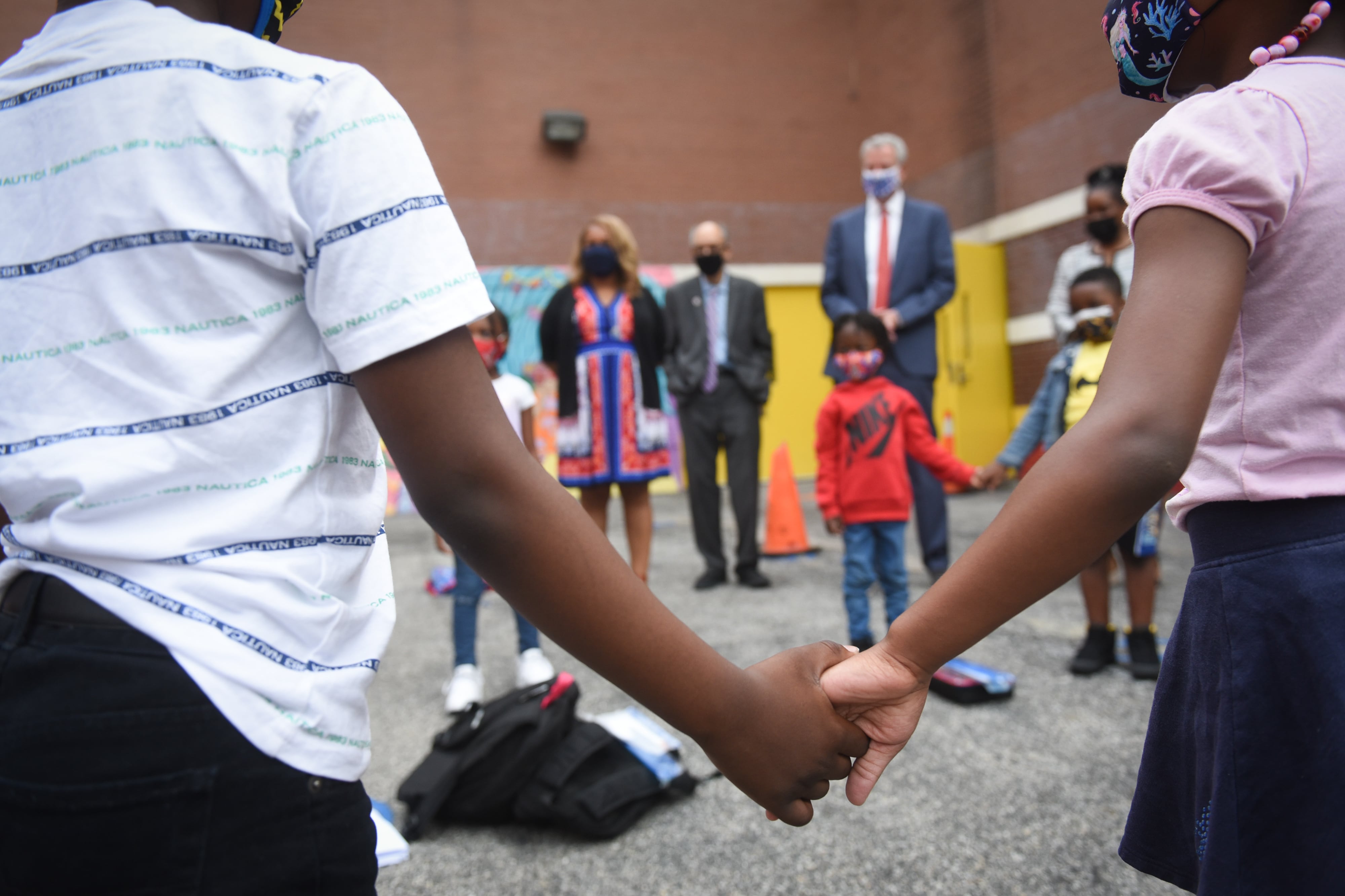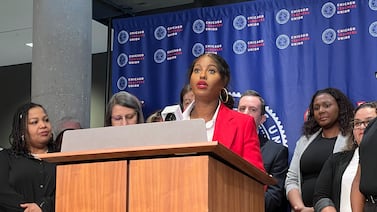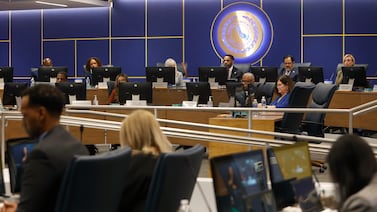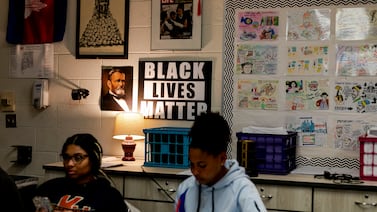Sign up for Chalkbeat New York’s free daily newsletter to keep up with NYC’s public schools.
Four years after New York City overhauled its free youth summer program to blend academics and recreation, city lawmakers are asking a seemingly basic question about the $230 million-a-year initiative: Is it working?
The answer is surprisingly difficult to pin down, reflecting a mish-mash of competing priorities and goals for the Summer Rising program, which emerged in 2021 as a way to re-engage kids struggling with isolation and learning loss during the COVID-19 pandemic, and has continued to grow in popularity since.
It’s a pressing question for city leaders, who will have to decide once again whether to draw from the city budget to replace expired federal COVID relief dollars that previously supported a portion of the program. City elementary and middle school families – who have increasingly come to rely on the program as a free summer option – will be paying close attention.
“We are at a critical moment where we need to stop and say: Does this make [sense], this model in this way?” said Bronx Council Member Althea Stevens, the chair of the council committee on children and youth, during a Wednesday hearing.
At the hearing, city officials acknowledged that there’s room to improve Summer Rising, which taps Education Department teachers to offer academic instruction in the mornings and community organizations contracted by the city’s Youth and Community Development Department to run recreational programs in the afternoon.
Still, they made the case for sticking with the basic model, citing the overwhelming demand for slots last year, some evidence of academic improvement among participants, and the ability to reach vulnerable kids previously left out of summer camp.
But critics argue that trying to cram a full academic and recreational schedule into the same program has undermined both components. Some families have bristled at the mandatory academic instruction, while educators said it’s been more difficult to focus on students who need the most support.
Chalkbeat reported over the summer that attendance has hovered at just around 60% over the past three years – a number critics say raises serious concerns about whether the program is meeting families’ needs.
Stevens argues the city should return to its pre-COVID model, where summer camp providers offered full-day recreational programs, and schools ran summer classes for students who failed courses during the school year.
Here’s what emerged during Wednesday’s hearing about how the program is working, and where it’s falling short:
Booming enrollment and signs of academic improvement
The first thing city officials often point to as evidence that Summer Rising is working is families’ overwhelming demand.
Last summer, roughly 160,000 students applied for some 115,000 spots, Education Department officials said Thursday. Thanks to tweaks to the application process, city officials said they were able to match a higher percentage of applicants with their first-choice programs this year than last, though tens of thousands of kids still landed on waitlists.
Despite the attendance woes, families reported largely positive experiences on the city’s survey, officials said.
Education Department officials also pointed to some evidence that the program is boosting academic outcomes, a central part of its original rationale as a way to help city students recover from pandemic learning loss.
Emma Vadehra, the Education Department’s deputy chancellor for operations and finance, said Thursday that Summer Rising had a “statistically significant impact in math” for students learning English, as measured by their performance on academic screeners. The city saw similar gains in reading for other “priority subgroups,” Vadehra said.
The Education Department didn’t immediately provide those analyses or further details.
The National Summer School Institute, the organization that authored the curriculum used across hundreds of Summer Rising sites, also saw growth on math and reading assessments from the beginning to the end of the summer, the organization previously told Chalkbeat.
Serving the most vulnerable populations
Officials and advocates said Summer Rising has opened up access to vulnerable kids who may have previously been left out of summer camp. The program uses a centralized enrollment process run by the Education Department that prioritizes students in temporary housing and foster care, kids with disabilities, and other groups.
Last year, roughly 16% of Summer Rising participants were homeless, 21% were English learners, and 24% had a disability, according to officials – all higher percentages than in the regular school system.
Low attendance and questions about academic focus
Skeptics of the program say booming enrollment numbers mean little if many of those kids don’t regularly show up.
Daily attendance this summer averaged just 62%, down slightly from 63% last year, and up a bit from 59% the year before, officials said. Attendance averaged 89% citywide last year during the school year.
Roughly 9,000 students who initially registered for Summer Rising never showed up once, city officials said.
“It’s nothing to celebrate,” said Rita Joseph, a Brooklyn Council member and chair of the education committee, who led Wednesday’s hearing alongside Stevens. “If 9,000 kids go missing in our school system, I would like to know where they are and what are they doing.”
Officials said attendance is often low during optional, free summer programs and isn’t comparable to school year numbers.
“We intentionally make it flexible for families to be in and out, to not mandate a certain thing, to allow them to opt out a couple weeks,” said Vadehra. “That is not something we’ve been looking to change because we think that flexibility in a free program is actually appropriate.”
A spokesperson from the Youth and Community Development Department previously told Chalkbeat that in 2019 before Summer Rising, attendance in free city-run summer camps located in schools averaged 69%.
Stevens and Joseph also questioned whether the mandatory academic portion of the day, which lasts from 8 a.m. to noon, is meeting kids’ and families’ needs. For students not assigned to summer school, having to sit through several hours of instruction a day can be alienating, the council members argued. And having to teach classes with up to 30 kids at a mix of academic levels can make it harder for teachers to target the kids who need the most support, the lawmakers contended.
“Everyone is in the same room, whether you’re mandated or not,” said Joseph, adding that the students who need the most academic support may fall through the cracks.
A survey of Summer Rising families set to be released later this month by United Neighborhood Houses, an umbrella organization for camp providers, found that while most parents value the mandatory academic time, nearly two-thirds of middle school students felt disengaged during their morning instruction, and more than half felt it didn’t help them academically.
Families also reported a lack of paraprofessionals for students with disabilities and inconsistent field trips, according to the survey.
“Summer Rising is filling a critical need for free child care and summer program options,” the report’s authors wrote. “However, the findings underscore that a one-size-fits-all, cookie-cutter approach … does not work.”
Michael Elsen-Rooney is a reporter for Chalkbeat New York, covering NYC public schools. Contact Michael at melsen-rooney@chalkbeat.org






